Lisle Cemetery
Introduction
Text-to-speech Audio
Images
Lisle Cemetery
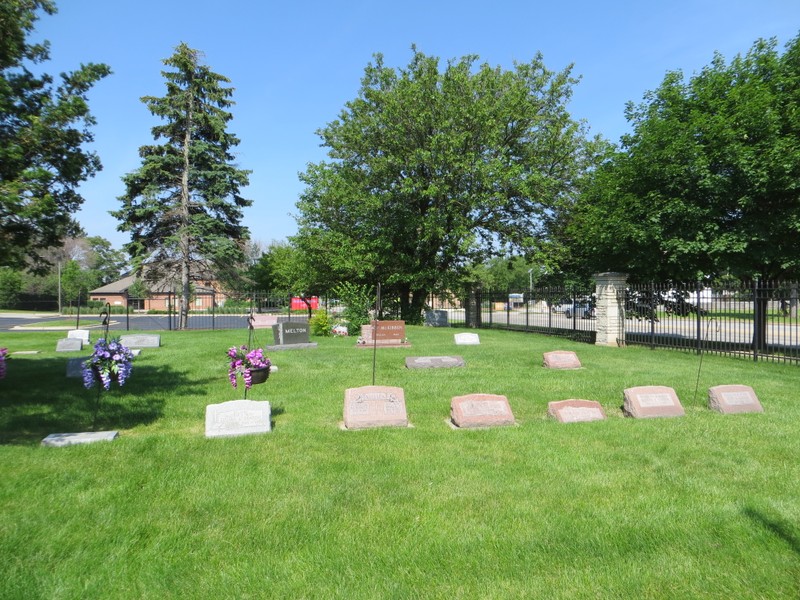
Historic plots in Lisle Cemetery
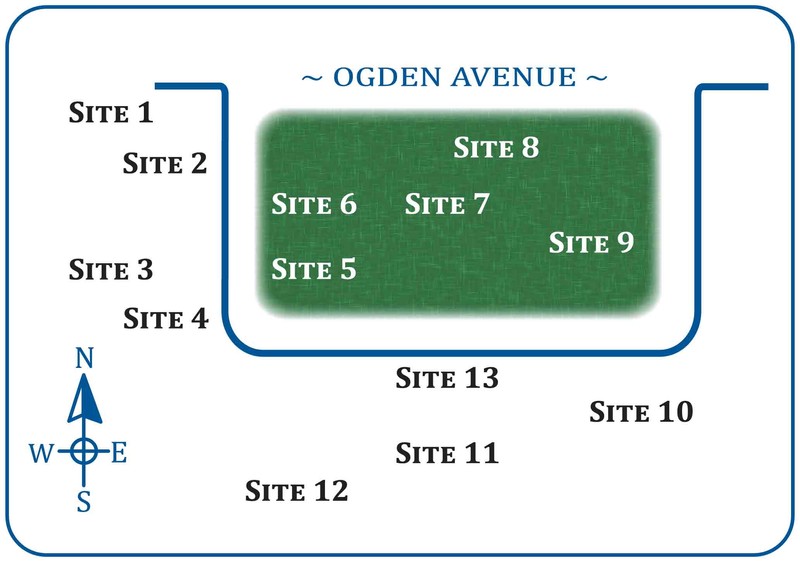
Gravestones in Lisle Cemetery, 1976
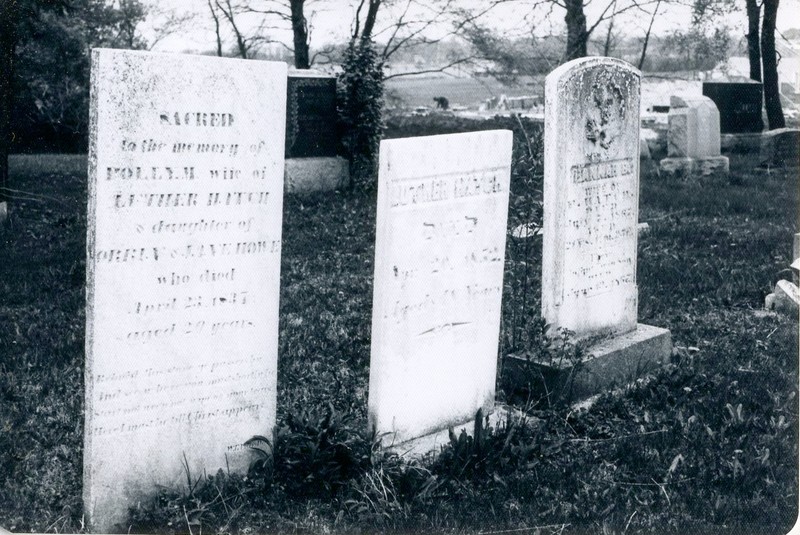
Postcard showing Lisle Public School c. 1900 (From the museum and Lisle Heritage Society collections held at MLSP)
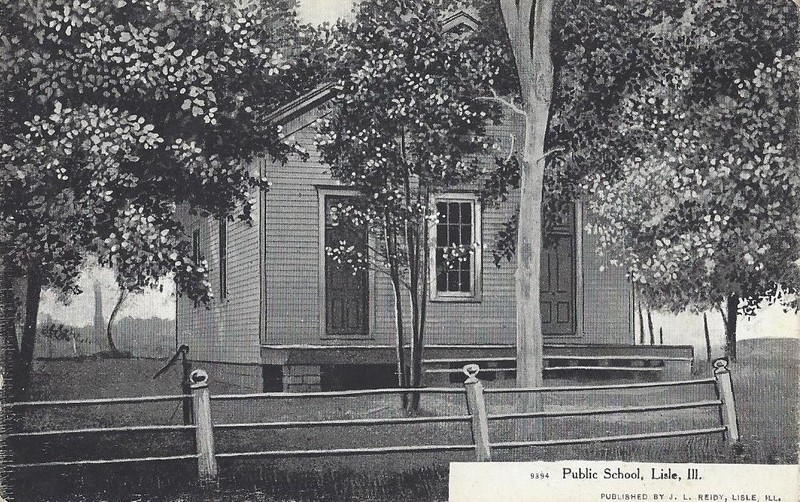
Gravestone of Polly Hatch, Luther Hatch's wife
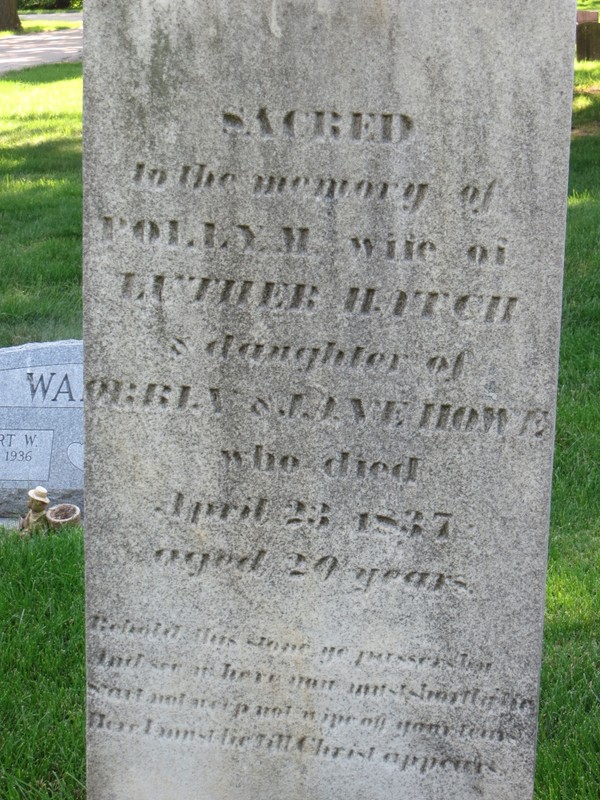
Gravestones of Ross Bishop, Sr. (Lisle's first casualty during WWII) and Viola Bishop Yender (widow of Ross Bishop Sr., and wife of Andrew Yender)
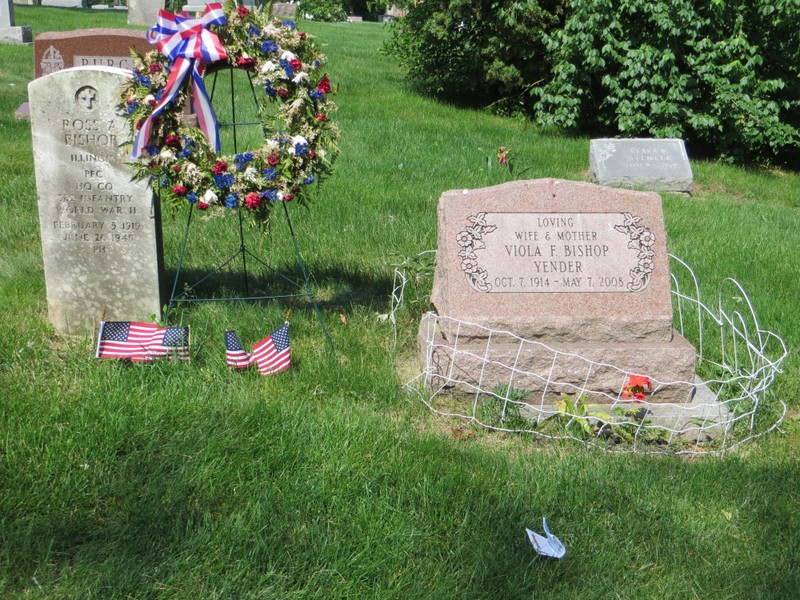
Backstory and Context
Text-to-speech Audio
The cemetery was established in 1832 when James C. Hatch donated a portion of his land so fellow settlers could bury their loved ones. James and his brother Luther traveled to Lisle from New England and were the first settlers in the area. Their ancestors are believed to have been in the second company of Pilgrims that arrived in America in 1626.
Five of the first eleven European settlers to stake property claims in the area during the 1830s are buried in this quaint, rustic cemetery. They include:
- Luther Hatch, settled 1832
- James Crombie Hatch, settled 1832
- A. B. Chatfield, settled 1834
- John Graves, settled 1835
- George Willard, settled 1835
James Hatch cared for the cemetery until June 4, 1883, when the Lisle Cemetery Association was formally incorporated under Illinois state law to collect fees that would be used to manage, maintain and improve the site.Lisle resident Bill McKibben was the volunteer care taker of the cemetery from 1957 until 1987. The Village of Lisle acquired ownership of the property in 1987 when Mr. McKibben could no longer maintain the cemetery. Since accepting ownership, the Village of Lisle has been committed to the restoration and preservation of the two-acres to ensure that its historical significance to the community endures.
(Adapted from The Lisle Cemetery, Village of Lisle, 2018.)
The Lisle Cemetery Association
“When the early settlers of DuPage County settled in this vicinity in 1832 and later there were no cemeteries where the dead could be buried so many were buried on the farms where they lived.”
“Realizing the necessity of a proper burial place, James C. Hatch dedicated a tract of his claim as a burial ground”
“Burials were made from time to time and no charge was made for lots and J. C. Hatch looked after it and paid tax on the plot.”
“June 4, 1883 it (the Lisle Cemetery) was incorporated under the State of Illinois as the Lisle Cemetery Association.”
(From the Lisle Cemetery Association Inc. Record Book)
The Lisle Cemetery Association was an organization set up to maintain and care for the cemetery. When the cemetery was first set up, burials were free, but as the population rose it was seen as necessary to charge for plots in order to maintain upkeep and even provide luxuries like a fence. Lots were eight by twenty feet and cost 30 cents a lineal foot. The first Board of Directors for the Association were S. J. Willard President, William Mertz Vice President, and J. C. Hatch Secretary and Treasurer. Orville Willard was chosen as Sexton. The board remained fairly stagnant and met only once a year, in June, to talk over business and elect, or in this case re-elect, officers. One might expect the inactivity due to the work that needed to be done on their farms.
Between the years 1883 and 1905 only one resolution is mentioned in the records stating: “That any lilac plant that would become a nuisance, or in any way be injurious to the cemetery be prohibited, and that the directors of the Association have power to cause the same to be destroyed.”
In the mid-1940s, the Lisle Cemetery Association became more active than in the past, meeting regularly, raising lot prices and even deciding to deposit the funds of the organization in a bank (Hinsdale Federal Savings and Loan Association). Because of the apparent inactivity of the past Board of Directors, the Board of the forties began improving the cemetery which had become overgrown because lack of upkeep. A pipe fence that was at the north end of the cemetery was removed and all “cutting and tree trimming” was postponed until they had a proper survey of the cemetery to find where the graves were.
As you look around you realize why this spot was chosen. It sits on high ground and looks over the surrounding area. One could imagine if you took away the buildings and left the Church, and returned the one room schoolhouse which sat on the northwest corner of the cemetery, that this is why they chose this place. It was nearly fifty years that the cemetery had its first interment to when it was formerly organized as a cemetery.
Historic Plots:
See site map in pictures.
Site 1
Lisle Schoolhouse
Lisle Schoolhouse, originally built in 1873.
After a Halloween Party in 1909, the Lisle Schoolhouse that was built in 1873 burnt to the ground. It was decided that because the well of the school was located near the cemetery, that because of health reasons (children drinking the water that came from the cemetery), that the school be rebuilt at an alternative site. In 1910, a new brick two room schoolhouse was built on Main Street, which is a portion of the present Village Hall.
The schoolhouse was the meeting place for the Lisle Cemetery Association, and after 1909 meetings were conducted at alternate places including the congregational church (which is across Ogden Avenue). In 1912 the cemetery association bought up the school property for $305.00 and made plans to enlarge the cemetery.
Site 2
Doris M. Gurtler
Doris M. Gurtler is a very special person in respect to the Park District and the Heritage Society. Her interest in historic preservation is one of the reasons that the Lisle Depot Museum exists. For her effort in the fight to save the Depot the Park District and Heritage Society dedicated it in her honor. She was editor of the Lisle Sun from 1956 until 1977. She died in 1979.
Lisle Station build in 1874 moved by the Lisle Park District and Lisle Heritage Society and turned into a historical museum, dedicated in the honor of Doris M. Gurtler.
Site 3
Baker Plot
As German was probably spoken in the Baker home, so it appears on the monument to their father “Unser Vater” translates to “Our Father” and “Gest” means “Died”. George Baker died in 1873 at the age of 48. “48 Jahr 7 t.” refers to “48 years 7 days” (t. for “tag” or German for “day”).
The shape of the stone is called an Obelisk, and the family name is at the base chiseled into the stone. Carved into the monument is a bush and a tree. The tree most likely represents the tree of life, the symbol of eternal life.
Site 4
Pelling Plot
Thomas and Jane are not only noted for being one of Lisle’s early settlers, coming her in 1843, but also constructing the original house that was on the site that the Netzley/Yender was built upon (which is now a Lisle historical museum). The Pelling homestead was destroyed by fire in 1858 or 1859. Pelling died March 26, 1891, aged 79 years 5 mo.
Site 5
Dixon Family Plot
The Dixon family plots tells of hardships experienced by early pioneer families. In this plot, all three family members roughly died within a year. Husband and wife, Ann and Robert, died three months apart in 1842 while their daughter left alone shortly followed in 1843. Most likely the family was stricken by a contagious disease, we will discuss pioneer diseases and their affect at the Willard plot.
The markers for this plot are very typical for the cemetery. They are made of limestone and are carved in Bas Relief. The size and squared off top are also typical. The weeping willow is the symbol of grief and its repetitive use on the markers shows this families tragedy.
Site 6
Nicholas Weber Plot
The draped curtain motif is a popular decorative motif that was brought from New England. The clasped hands symbolize holy matrimony. He was born January 18, 1789 and died November 1869, 89 years 9 months and 19 days.
Site 7
Mertz Family Plot
Solomon Mertz was born in 1812 and came to Lisle in 1845. Like most of the area, he was a farmer making a living off of the rich soils. Solomon’s father served in the Revolutionary War at the Battle of Lexington. He married Lucy Butts in 1834 and together they had 11 children of which two are buried in this cemetery (Leonard and Owen). Lucy died in 1854 and Solomon took a new wife, Saloma Rehn (he was 43 and she was 19). Together they had nine children, 5 whom are buried in the cemetery. Solomon died in 1890 and was noted in the 1882 DuPage County Atlas as being, “among the noted hunters of the county”.
What is so interesting about the plot is how the family arranged the burials in order to accommodate all who are buried there. As you center yourself at Solomon’s grave his two wives are buried to either side of him, Lucy on the right and Saloma on the left. Lucy’s children that are buried in the cemetery are buried with her on the right, while Saloma’s children are buried next to her on the left side of the plot. All are accommodated in this neat family plot.
Owen Mertz, son of Lucy and Solomon, was a Civil War Veteran and served as a private in the Eighth Cavalry Regiment which was organized in St. Charles in 1861. In all, the regiment wounded or killed 3,946 Confederate soldiers and liberated 3,000 slaves.
To the left of Owen’s wife Susan is a double grave of the Owens two daughters, Maude and Elsie ? (names are unclear) who both died in 1886. Just below the writing of “Daughters of” are two entwined roses symbolizing the two lost daughters. Roses symbolized love, wisdom, beauty.
Site 8
Jane Fothringham and Elizabeth Richardson Plots
As mentioned in the description of the Willard plot, doctors had few proven remedies for pioneer diseases and most could not give quality care to those who lived down untraveled roads and isolated areas. Both Jane Fothringham and Elizabeth Richardson were both wives of pioneer doctor’s (as noted on their grave markers) and both could not be saved by their own husbands. Jane Fothringham, wife of Dr. Geo., died in 1845 at the age of 29 and Elizabeth Richardson, wife of Dr. R.A., died in March 1851. Elizabeth Richardson’s epitaph reads:
“Calm on the bosom of thy god
Fair in spirit rest thee now.
E’en while with us thy foot step strait
His seal was on thy brow.”
It is unknown why two doctor’s wives are buried next to each other.
Site 9
Ross A. Bishop
Ross A. Bishop, a member of the 382nd Infantry, is a World War II soldier from Lisle that died in the line of duty. Lisle Memorial Day services are held at his grave.
Site 10
Potter’s Field
When this cemetery was first set up it included a Potter’s Field or poor man’s cemetery. In the time of Victorian Christian charity, a Potter’s Field was an essential part of the cemetery and most Victorian cemeteries include them.
Site 11
Hatch Family Plot
The Hatch plot is probably the most important plot in the cemetery. James is not only credited with the founding of Lisle but also donated a portion of his property for this cemetery. In all, 11 Hatches are buried in the plot including James, his wife Charlotte, brother Luther, and various other family members.
Luther’s wife Polly’s marker contains numerous amounts of information including her age, 20, and her parents Orrin and Jane Howe. This marker also includes an epitaph, which reads as follows;
“Behold this stone ye passers by
And see here you must shortly be
Still not weep nor wipe your tears
Here I must be till Chris appears.”
This seemingly morbid quote from W. E. Peters, Detroit (printed on the bottom of the stone) actually alludes to Immortality or being taken to heaven by Christ. The shortness of Polly’s life here is consoled by reference to her resurrection and heavenly reward.
Epitaphs in general refer to the deceased as living and the hope that they are in a better place. As in this epitaph as in many the saying expresses more than one meaning. Here it is both sorrow and the rewards of an afterlife.
Hannah B., Frederick’s wife’s marker, shows the hand of God pointing earthward.
Site 12
George Willard Family Plot
This family plot contains the oldest existing graves in the cemetery and tells the hardships of pioneer life. Three family members of the Willard family died within a period of a little over a month. George Willard died August 7, 1836 and is the oldest existing interment in the cemetery. Daughters Oriel and Annis died shortly after in September at the ages of 11 and 20.
The summer months with their summer diseases were often devastating to pioneer families whose knowledge of medicine was, as compared to today’s standards, quite poor. Diseases such as Ague (fever, chills, shaking at regular intervals), Whooping Cough, Dysentery, Diphtheria, Scarlet Fever, and numerous other diseases were so contagious that they often wiped out a large portion of the family as is the case of the Willards. With little knowledge of medicine and few doctors to aid the sick many relied on homemade remedies that were often worse for the sick. In one pioneer letter dated January 3, 1845 from Babcock’s Grove (which later became the town of Lombard) 8 ailments are listed within the letter including: ague, infection, whooping cough, jaundice, and consumption (diphtheria).
Site 13
Uriah C. White Plot
Uriah C. White was a member of the 105th Illinois Infantry that was formed in Dixon, by special request of Abraham Lincoln because of the need of 300,000 more soldiers for the Civil War. This regiment had the most DuPage County residents than any other Union division, and thus was a favorite son. Most of the 105th fighting occurred in Georgia.
At the top of White’s grave is “Mus’n” noting that he was a musician in the regiment. White was one of the only two musicians in the 105th, the other being Joseph Watts of Winfield. It is not known what instrument White played.
Site 14
Schrodi Plot
Schrodi farmed near the Chicago, Burlington, and Quincy Railroad tracks in Lisle. These two markers of he and his wife are interesting because of their use of Spencerian Script writing. Spencerian Script was a popular mid to late Victorian pen and ink writing that used varying methods of lettering. Here is used block lettering with a square background, script and various other styles to create a pleasing effect. Both stones are topped with crosses, the symbol of finished redemption, passion, or faith.
When the railroad came through the town, it is said that Schrodi opposed them. One reason might have been because the tracks ran right through his property.
Sources
The Lisle Cemetery. Village of Lisle, 2018.
The Museums at Lisle Station Park staff and volunteer research
MLSP
MLSP, Lisle Heritage Society
From the musuem and Lisle Heritage Society collections held at MLSP
From the museum and Lisle Heritage Society collections held at MLSP
MLSP
MLSP
